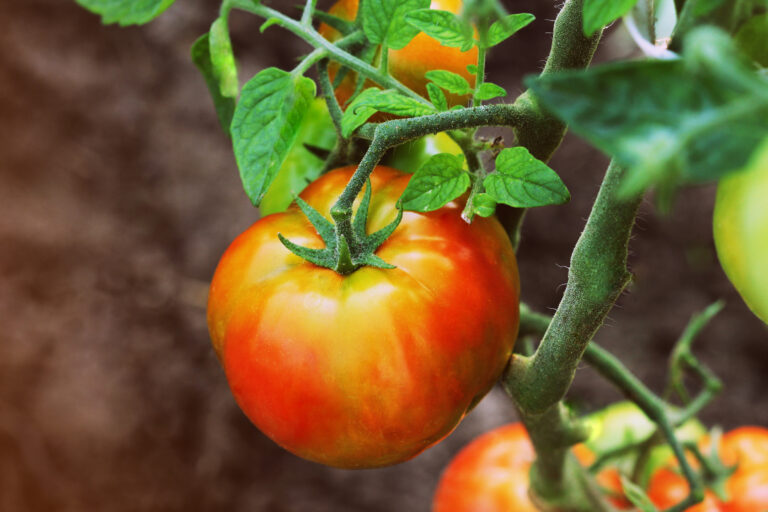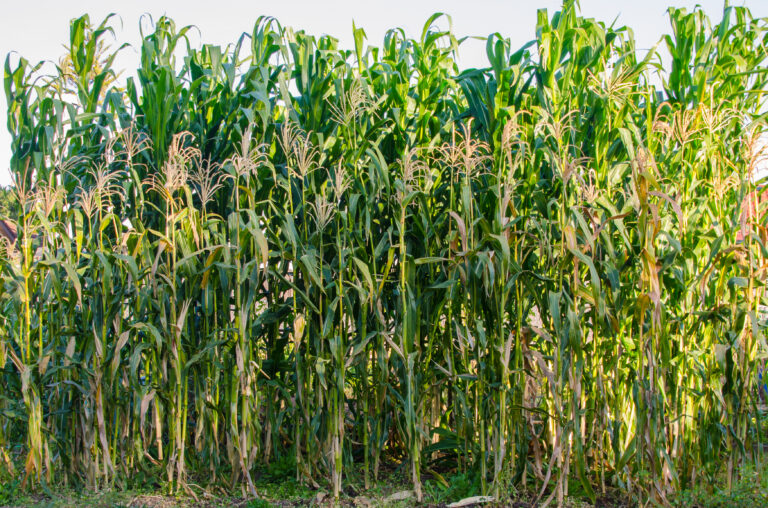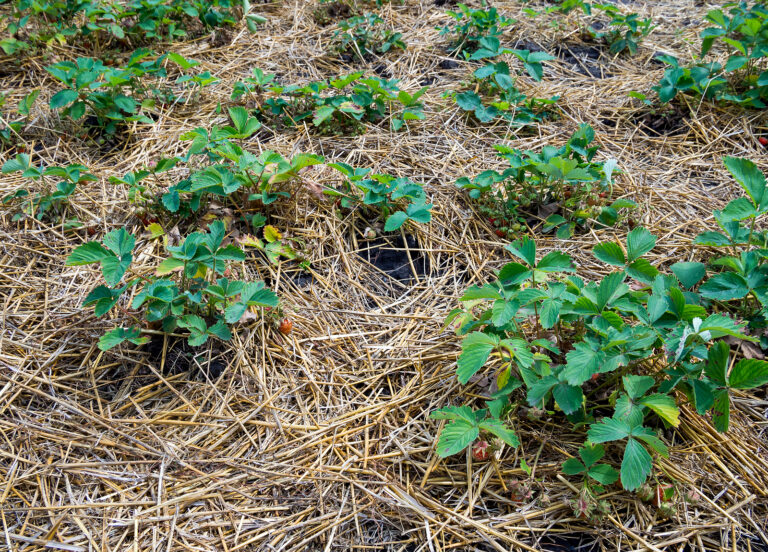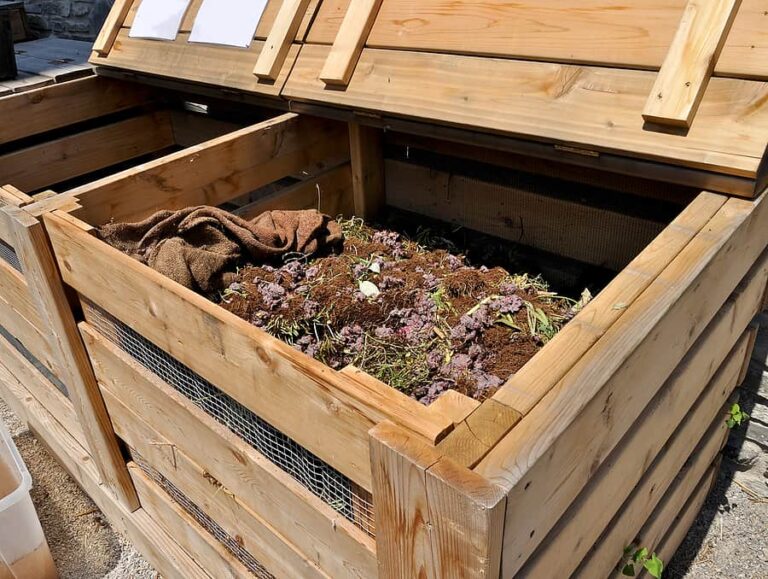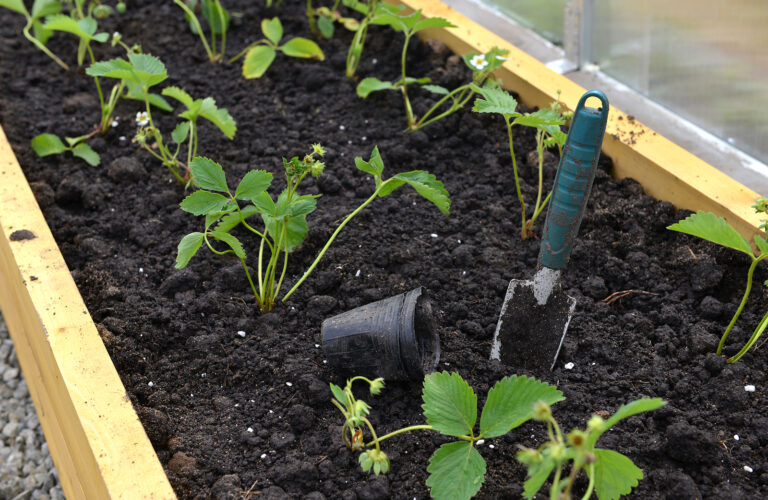Cool-Season Vegetable Varieties
Cool-season vegetables are for planting and growing in late winter, early spring, or in late summer, autumn, and early winter. These crops do best in temperatures between about 40°F and about 70°F (4-21°C). Many can withstand temperatures colder, but few can thrive in temperatures warmer.
Make sure that cool-season crops planted in spring have enough time to reach maturity before the weather turns warm. Conversely, make sure cool-weather crops planted in late summer and early autumn have enough time to reach harvest before the first heavy freeze or big snowstorm.
Check the seed packet or the plant markers that come with vegetable starts to see how many days the seed or plant requires to reach maturity. Then plan your sowing, transplanting, and harvesting accordingly–marking your calendar.
Good Products for Season Extension at Amazon:
Once the weather warms, cool-season crops will be done and you will want to plant warm-season crops.
Hardiness is a term used to describe a cool-season plant’s ability to survive winter without protection. The terms “hardy” and “semi-hardy” are important when deciding which crops to plant where you live.
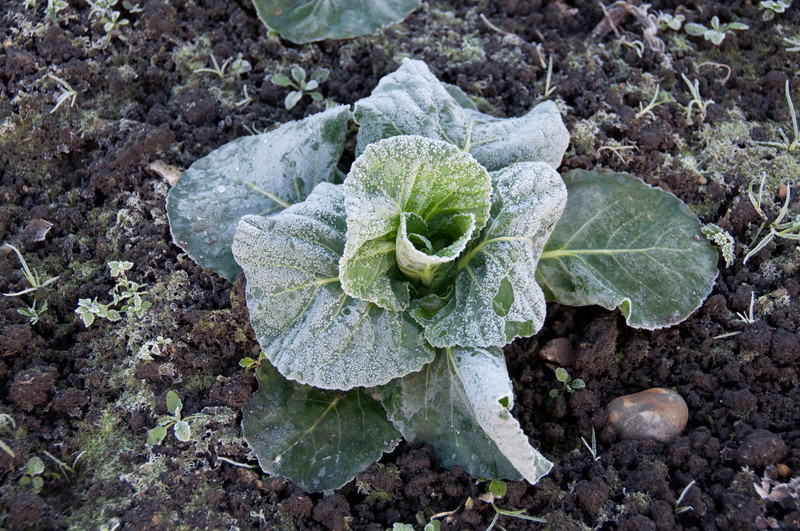
Temperature and planting cool-season vegetables
Salad greens, sweet root crops, and peas are cool-weather vegetables for fall and spring harvest. These edibles want to get their start in warm soil—either in the mid- or late-summer garden for autumn harvest or indoors or undercover for spring harvest; they want to come out of the garden while temperatures are cool—averaging in the low 60°sF or cooler.
Cool-season vegetables should be planted in late winter or early spring so that they mature in mid-to-late spring before the weather grows warm. Cool-season crops can be planted again in mid to late summer so that they mature in the cool of autumn.
For spring harvest, sow seed so that crops come to harvest before daytime temperatures trend in the 60°sF; this may require starting seed indoors or under cover of plastic tunnels or garden fabric row covers—to make sure the soil is warm enough for seed germination.
As well, you can protect fall harvest crops or extend the growing season by covering cool-weather edibles with row covers or plastic tunnels when temperatures dip. Plastic tunnels will keep crops 10°F warmer than the outside temperature; row covers will keep crops 4°F warmer or slightly more.
Most cool-weather crops will not be harmed by the first frost or two in autumn. Broccoli, kale, spinach, arugula, and turnips will produce deep into autumn and winter—even when temperatures dip below freezing at night. Root crops will actually become sweeter with frost.
To grow vegetables during the cool time of the year, keep the following in mind:
- Cool-season vegetables require a minimum soil temperature of 40° to 50°F (5-10°C) to grow.
- Most cool-season crops grow well when the air temperature is in the 60°s Fahrenheit—upper teens Celsius. Cool-weather crops do not grow well when the air temperature is greater than 75°F (24°C).
- Some cool-season crops can withstand frost and freezing temperatures if they are nearly mature when cold hits. Keep this in mind for the autumn harvest.
- Most cool-season crops will suffer and even die if temperatures grow warmer than 80°F (26°C).
Cool-season vegetables can withstand the light frost and the short freezes of early spring and late autumn.
Getting an earlier start
If you want to start vegetables earlier, sow seeds indoors for transplanting out later or grow crops under plant blankets or plastic tunnels until after the last frost. See articles on Season Extension to grow outside of the growing season where you live.
Use seed packets to know planting dates
Sow cool-weather edibles for fall harvest by checking seed packets for “days to maturity” then add 14 days to the number on the packet and count back on the calendar from the average first frost date in your region; that is your seed starting date. For example, if the lettuce variety you are planting matures in 40 days, sow seed 54 days before the frost date.
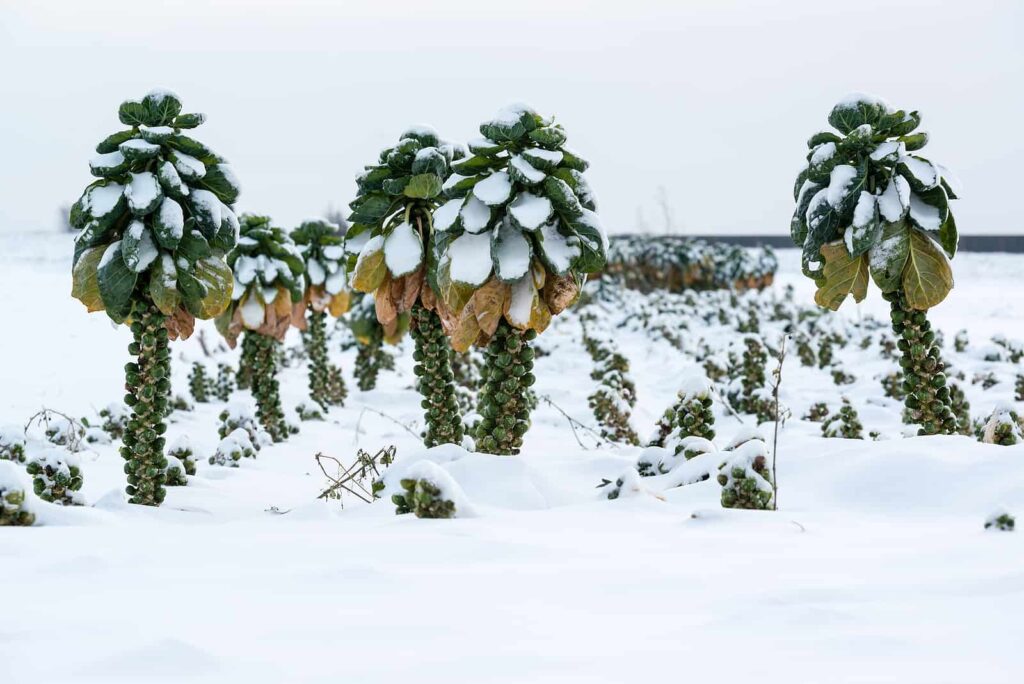
The meaning of “hardy”
Hardy is a gardener’s term for a plant’s ability to withstand adverse conditions—commonly cold temperatures. Hardiness will vary from crop to crop and even from one crop variety to another.
Hardy vegetables can be planted two to four weeks before the last frost in spring. These crops can withstand subfreezing temperatures for days and even weeks. Their seeds will germinate in cold soil and their seedlings can endure short freezes. See also: Average Date of the Last Frost and Days in the Growing Season.
Vegetables for spring and late summer planting should be hardy; they should be able to withstand late frosts in spring and early frosts in autumn.
Hardy vegetables
Hardy vegetables can tolerate a hard frost—about 25° to 28° F (-3 to -2°C). The hardiest crops are kale, spinach, and collards which can tolerate temperatures in the low 20s and high teens.
- Asparagus
- Broccoli
- Brussels sprouts
- Cabbage
- Chinese cabbage
- Collards
- Garlic
- Horseradish
- Kale
- Kohlrabi
- Leeks
- Mustard greens
- Onions
- Parsley
- Peas
- Radish
- Rhubarb
- Rutabagas
- Spinach
- Turnip
Half-hardy vegetables
Half-hardy vegetables can tolerate only light freezes–that is short-term exposure to subfreezing temperatures. Half-hardy crops should be planted around the date of the last spring frost.
Here is a list of half-hardy vegetables. Sow the seeds of these crops or set out transplants near the average date of the last frost in your area. Half-hardy crops include:
- Artichokes
- Beets
- Carrots
- Cauliflower
- Celeriac
- Celery
- Chard
- Chinese cabbage
- Chicory
- Cresses
- Endive
- Escarole
- Lettuce
- Mustard
- Parsnips
- Potatoes
- Radishes
- Salsify
- Swiss chard
- Turnips
You may find that transplants or vegetable starts work best in autumn. That way summer crops can remain in the garden for a few weeks longer. Vegetables started indoors in early spring extend the growing season as well.
Also in the coldest growing regions, a double cover of both a tunnel and cold frame may keep the soil from freezing.
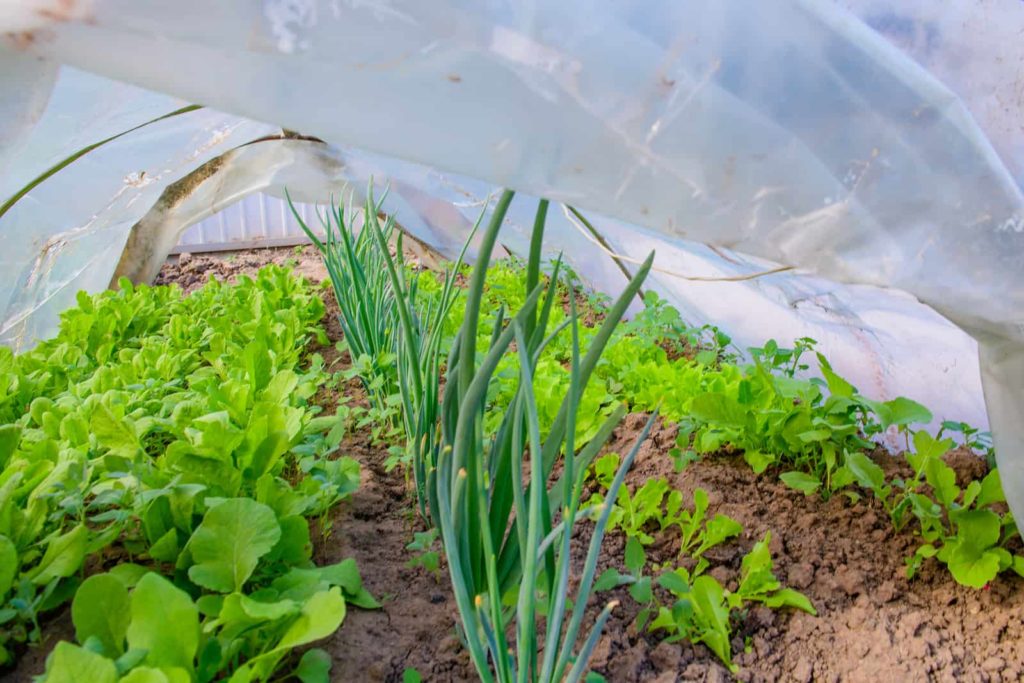
Suggested cool-season vegetable crop varieties
Arugula
Add arugula to green salads for its nutty zing; thin to 6 inches apart and harvest leaves young and tender for the best flavor—older leaves can be sharp and bitter. Easy salad choice matures in less than 50 days. Arugula is mild-flavored when grown in cool conditions; plant by mid-autumn in frame or tunnel for harvest throughout winter; plant again in January.
Beets
Beets mature in 55 to 80 days from seed; prefer loose, compost-rich soil that is moisture retentive for best root formation; add bone meal and rock potash before planting; thin seedlings to 3 inches apart when they are 6 inches tall—use thinnings for salads or cooking; when the weather is warm mulch to conserve moisture and keep soil temperature evenly cool. Sow beet seeds from February through August.
Choose varieties that mature in 55 days or less; try to seed beets 10 weeks in advance of the first frost: ‘Bull’s Blood’ (40 days) early harvest heirloom; ‘Chioggia’ (54 days) beautiful ringed heirloom; ‘Golden Globe’ (55 days) sweet-flavored heirloom; ‘Red Ace’ (53 days) honey-sweet hybrid. Additional varieties include ‘Albina’, ‘Vereduna’, ‘Cylindra’, and ‘Detroit Dark Red’.
Choose a broccoli variety maturing in about 60 days and good side-shoot production: ‘Early Dividend’ (46 days) excellent side-shoot development; ‘Patron’ (60 days) mid-late season hybrid; ‘Arcadia’ (70 days) cold-tolerant; ‘De Cicco’ (60 days) mild-flavored heirloom; ‘Early Green’ (65 days) extended harvest from side shoots; ‘Gypsy’ (58 days) heat tolerant; ‘Packman’ (55 days) hybrid. Additional varieties include ‘Emperor’, ‘Green Comet’, ‘Green Goliath’, ‘Minaret’, ‘Premium Crop’, and ‘Waltham29’. Grow broccoli from seed from February to March and from July through August. Set out transplants from August through September..
Broccoli raab
A favorite of Italian cooks this mustard-broccoli relative is also known as rapini and Chinese broccoli; unlike broccoli, broccoli raab forms loose sprouting shoots, not heads; quickly growing to 12 inches tall; harvest before the buds open for a sweet flavor taste like broccoli but a tad stronger; steam for three minutes, drain then stir-fry in garlic and olive oil and serve with grated Parmigiano.
Brussels sprouts
Choose varieties that mature in 100 days or less. Long-season cool-weather Brussels sprouts are always best started from transplants. Taste improves with each fall frost. Can go 6 to 9 weeks past freeze with protection. ‘Long Early Dwarf Danish’ (95 days) freezing temperature enhances flavor; ‘Oliver’ (90 days) early harvest; ‘Jade Cross’ (100 days) holds well in poor weather. Grow Brussels sprouts from seedlings beginning in February. Sow seed in July.
Cabbage
Choose cabbage varieties that mature in less than 90 days. Harvest before the first freeze. ‘Gonzales’ (60 days) small head; ‘Ruby Perfection (85 days) hybrid for fall storage; ‘Fast Ball’ (45 days) compact head; ‘Earliana’ (60 days) great flavor. Additional varieties include ‘Copenhagen Market’, ‘Early Jersey Wakefield’, ‘Golden Acre’, ‘Red Rookie’, ‘Ruby Hall Hybri, and ‘Savoy King.’ Grow cabbage from seed February through April and July through August. Set out transplants in September.
Calendula
Calendula’s daisy-like orange and yellow blooms can be added to salads for their tangy flavor; blooms from late fall through spring in mild-winter regions, from spring to mid-summer in cold-winter regions; plant in full sun in well-drained soil.
Carrots
Carrot roots mature in 65 to 75 days from seed—pull as soon as roots are edible for best flavor; soil must be free of stones and lumps for best root formation—raised beds are ideal; seeds germinate in 2 to 3 weeks—let the soil be on the dry side until seedlings pop up, then keep growing bed evenly moist, mulching to conserve moisture if necessary; thin seedlings early to 2 inches apart.
Choose varieties that mature in less than 60 days. Carrots can be stored in the ground where the soil does not freeze. Grow in a cold frame protected from a hard freeze. In severe winter areas, cover carrots with straw inside the frame.
Varieties to grow include ‘Chantenay’, ‘Danvers’, ‘Little Finger’, ‘Minicor’, ‘Nantes’, ‘Paris Market’, and ‘Thumbelina’. Sow carrot seeds from April through May.
Cauliflower
Choose cauliflower varieties that mature in less than 60 days. Best started 10 weeks before the first fall frost. ‘Snow Queen’ (50-60 days) is easy and easy to care for hybrid; ‘Violet Queen’ (54 days) early hybrid; ‘Early Dawn’ (45 days). Additional varieties include ‘Cheddar’, ‘Early Snowball’, ‘Graffiti’, ‘Panther’, ‘Romanesco’, and ‘Snow Crown’. Grow cauliflower from seed from February through March and July through August. Set out transplants in September.
Cilantro
Use cilantro leaves in salads or as a seasoning in cooked dishes; plant in composted, well-drained soil; regular water encourages growth and delays bolting; thin seedlings to 4 inches apart and later to 8 inches apart at maturity; harvest outer leaves as needed or chop them up and freeze them to use later; when the plant goes to seed collect the gray-brown seeds (called coriander) and crush them to use in beans and stews.
Collards
Collard varieties for cool-season growing include ‘Blue Max’, ‘Georgia’, and ‘Vates. Sow collard seeds in March; set out young plants from September through October.
Corn salad
Corn salad, also called mache, is a cold hardy salad and cooking green with a mild, nutty flavor also known as corn salad and lamb’s lettuce; from seed, 90 days to harvest; plant in well-drained soil; thin seedlings to 6 inches apart; forms an 8-inch wide rosette which is harvested whole; quickly bolts in warm weather so harvest while temperatures are cool. Corn salad germinates best in cool soil. Corn salad is very cold hardy. Reaches maturity in less than 50 days. Harvest the whole plant at about 4 inches or cut and come again. Plant in a cold frame for all winter use.
Endive
Endive needs about 90 days to maturity, but you can harvest earlier. Plant endive late summer for a fall and winter harvest, early spring for a summer harvest. Escarole is hardier but both will do well through winter with cold frame protection. Endive: ‘Full Heart Batavian’ (85 days), ‘Large Green Curled’; Escarole: ‘Nuvol’ (50 days).
Garlic
Plant cloves in fall to establish good root growth, not top growth. Garlic will mature in 7 to 8 months. In late fall cover the growing bed with straw and top dress with compost. Garlic matures in summer when the tops fall over. Garlic varieties to grow include ‘Burgundy’, ‘California Early’, ‘CaliforniaLate’, ‘Georgia Crystal’, ‘Inchelium Red’, ‘Rosewood’, and ‘Susanville’. Plant cloves from October through November.
Kale
Kale matures in 60 to 80 days; plant in mid-summer for fall and winter crops or late winter for late winter and early spring crops in mild climates; harvest cut-and-come again; light frost sweetens the flavor.
The inside leaves are generally tastier than the outer leaves. Kale can be harvested from under the snow. Low-growing varieties are best for cold frames; taller varieties are not as cold hardy. ‘Vates Dwarf’ (65 days) low growing; ‘Winterbor’ (65 days), ‘Blue Curled’ (65 days); ‘Red Russian’ (25 days) tender heirloom; ‘Toscano’ also called ‘Luciano’ (30 days) heat-tolerant savoy heirloom; ‘White Russian’ (50 days) frilled, dissected heirloom, Sow seed or set out plants in February and from September through October.
Kohlrabi
Kohlrabi is best grown in fall and winter; grow kohlrabi outdoors until a hard freeze then harvest and store; grow in a cold frame or plastic tunnel for a longer harvest. ‘Grand Duke’ (48 days) hybrid; ‘Early White Vienna’ (55 days) open-pollinated; ‘Purple Vienna’ (60 days) open-pollinated. Additional varieties include ‘Early Purple Vienna’ and ‘Kohlibri’. Grow kohlrabi from seedlings from February through April. Sow seed from August through September.
Leeks
Leeks mature in about 100 days. It is best to start leeks in flats from seed and then transplant seedlings to the garden; set about 4 inches apart when plants are 4 inches tall. Blanch the shank of leek by mounding soil up around it or by covering it with a paper collar, or plant leeks in a trench 4 inches deep and fill in the trench as the plant grows; be sure to give leeks steady water. Start leeks for winter harvest in early spring, a long-season crop. Bunching leeks will grow to pencil size in 8 weeks or so; they can be harvested as the spring-planted leeks grow to maturity. The fastest maturing varieties are ready in about 80 days. ‘Electra’ (145 days), ‘Titian’ (90 days); ‘Varna’ (70 days).
Lettuce
Lettuce season is spring, summer, and fall in cold regions; fall, winter, and spring in very warm regions. Plants mature rapidly, so sow seeds every two weeks for a continuous harvest; easiest to sow in rows 12 to 18 inches apart and thin seedlings to 6 inches apart; water regularly; harvest leaf lettuce cut-and-come again; lettuce is sensitive to hot weather and will bolt to seed if temperatures are too warm—or plant in a shaded area; lettuce grows best in soil rich in organic matter—using plenty of phosphorus, potassium, and nitrogen.
Choose varieties that mature in 60 days or less. Lettuce can take only so much freezing and thawing, even in a cold frame or tunnel; plants should reach harvestable size by early winter; winter varieties can survive through winter in a cold frame if protected from multiple freezes. Choose leafy varieties rather than heading varieties for the earliest harvest. Looseleaf varieties are fast-growing, less than 50 days. Butterhead varieties form a head and require about 75 days. Romaines require about 70 days. Choices: ‘Winter Density’, ‘Green Wave’; Butterhead: ‘Dear Tongue’ (46 days” heirloom buttercrunch; ‘Dark Green Boston’, ‘Summer Bibb’; Romaine: ‘Cinnamon’ (65 days), red romaine heirloom; ‘Parris Island’, ‘Valmaine’; Looseleaf: ‘Lolla Rosa’ (53 days) looseleaf heirloom; ‘Salad Bowl’, ‘Oak Leaf’, ‘Green Ice’, ‘Red Sails’, ‘Ruby’; ‘Simpson Elite’ (53 days) heirloom.
Mesclun
Mesclun grows much like lettuce but is ready in half the time, about 25 days.
Mustard Greens
Sow mustard greens in fall for harvest throughout winter. ‘Tatsoi’ (45 days); ‘Mizuna’ (40-60 days). Additional varieties include ‘Florida Broadleaf’, ‘Red Giant’, ‘Savannah’, ‘Southern Giant Curled’, ‘Tender Green’. Sow mustard seeds from February and March, and August through September. Set out transplants from September through October.
Onions
Bulb onions are planted in winter for late spring or summer harvest, usually 90 to 120 days. Bulb onion thinnings can be used as green onions. Bunching onions and green onions can be harvested in about 70 days. Bulb onions: ‘Fiesta’, ‘Yellow Sweet Spanish’, ‘White Sweet Spanish’, ‘Southport Globe’, ‘Stockton Yellow Globe’. Small bulb and bunching: ‘Red Beard’ (85 days) bunching, grow through winter, harvest summer; ‘Red Long Tropea’ (90 days) red bulbs, harvest mid-, late summer; ‘Rosa di Milano’ (110 days) barrel-shaped; ‘White Spear’ (65 days) late bunching. Additional bulb onions include ‘Early Yellow Globe’; Granex types include, ‘Grano’, ‘Southport White Globe’, ‘Stockton Red’, ‘Sweet Sandwich’, ‘White Sweet Spanish’, and ‘Yellow Sweet Spanish. Set out plant in September; sow seeds from January through February. Green bunching onion varieties include ‘Southport White Globe’, ‘WhiteLisbon’, and ‘White Sweet Spanish. Plant sets from March through April.
Pansies and Violas
Use these brightly colored flowers of pansies and violas in salads and garnishes for their mellow flavor and candied scent; winter and spring blooming in mild-winter regions, spring through summer in colder regions.
Parsley
Parsley varieties all mature in about 80 days, but parsley takes at least 21 days to germinate. ‘Darki’, ‘Drausa’, ‘Italian Dark Green’.
Parsnips
Parsnips are the hardiest of root crops. Plant parsnips early summer for next spring harvest maturing in about 120 days; winter over with no protection even in coldest regions. Dig parsnips when the soil has thawed. Parsnips can store for 4 to 6 months.
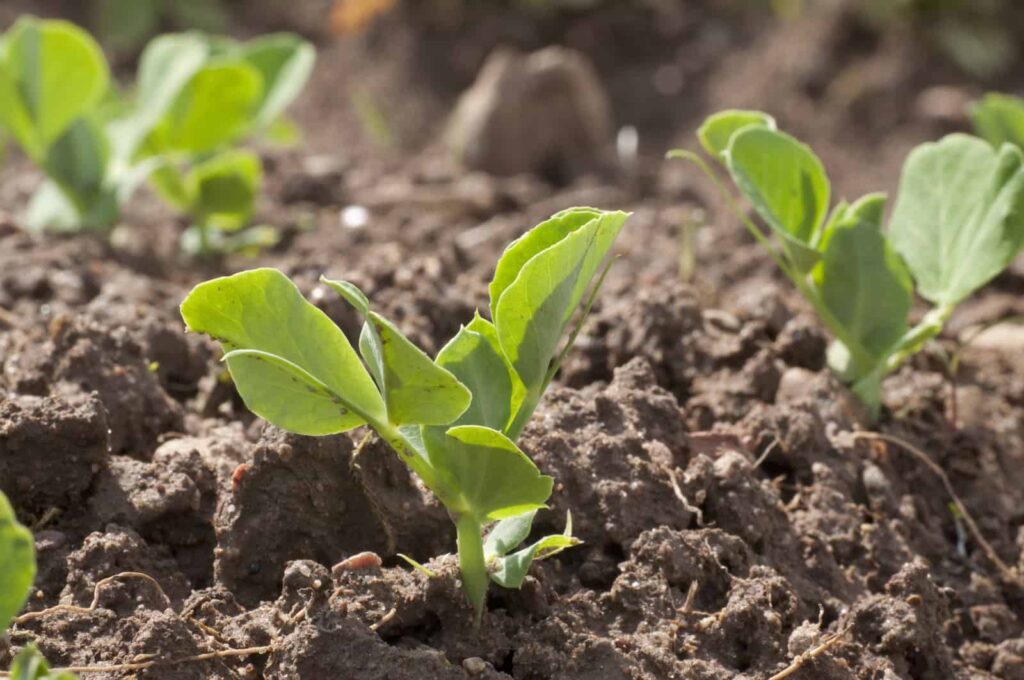
Peas
Peas require 60 to 80 days from seed to maturity; sow varieties that mature at different times for a longer harvest or make successive sowings if winters are mild or summers are cool; sow in compost-rich soil that is well drained; pick regularly, otherwise plants will stop producing.
Sow peas for autumn harvest at least 60 days before the first light frost; leaves and vines are hardy, not the pods; freezing will damage the pods. Use an A-frame plastic cover to extend the season by 3 to 4 weeks. Low-growing varieties come to harvest earlier. China, snow or sugar peas: ‘Dwarf Grey Sugar’ (65 days); ‘Mammoth Melting Sugar’ (75 days). Garden peas: ‘Freezonian’ (63 days); ‘Green Arrow’ (65 days); ‘Maestro’. Snap peas: ‘Sugar Ann’ (56 days); ‘Sweet Snap’ (60 days), ‘Sugar Rae’ (70 days), ‘Sugar Daddy’ (75 days); ‘Super Sugar Snap’ (60 days). Additional English peas varieties include ‘Green Arrow’, ‘Little Marvel’, ‘Wanda’; shelling peas include ‘Little Marvel’, ‘Maestro’, ‘Tall Telephone’; sugar snap varieties include ‘Sugar Daddy’, ‘Sugar Mel’, and ‘Super Sugar Snap’.
Potato
Plant seed potatoes from January through March. Varieties to grow include ‘Bintje’, ‘Caribe’, ‘Cobbler’, ‘Kennebec’, ‘Red Pontiac’, ‘Rose Finn Apple’, and ‘YukonGold’.
Radicchio
Radicchio matures in about 60 days. Heads will survive all winter under the protection of a cold frame but it is best to grow them to maturity before the weather gets too cold.
Radish
Radish is a cool-weather crop that matures in just three weeks; prefers well-turned compost-rich soil; thin plants to 1-inch spacing; good crop to interplant with slower growing vegetables; harvest as soon as they are an edible size for best flavor.
Radishes can be one of the last crops sown in fall (and one of the first in spring); radishes grow best in cool, moist conditions. Radishes can be harvested as early as 25 days and will keep in cool soil for up to 60 days. ‘China Rose’ (52 days); ‘Tama’ (65 days); ‘Cherry Belle’ (25 days), ‘Champion’ (24 days), ‘April Cross’ (45 days), ‘Icicle’ (30 days); ‘Snowbelle’ (26 days).
Spinach
Spinach will germinate and grow at temperatures just slightly above freezing and continue growing until freezing. Plant in compost-rich soil for best growth; optimal germination temperature is 50°F; requires cool weather and moisture-retentive soil for flavorful harvest; for successive harvests, make small sowings weekly. Varieties to grow include ‘Indian Summer (39 days); ‘Winter Bloomsdale’ (45 days); ‘Olympia’ (45 days); ‘Tyree’ (45 days). Additional varieties include ‘America’, ‘Bloomsdale Longstanding’, ‘Giant Nobel’, ‘Melody’, ‘Oriental Giant’, ‘Virofla’. Grow New Zealand spinach as a summer substitute.
Swiss Chard
Swiss chard ery easy to grow in hot weather and hardy to 20°F; plant in compost-rich soil for flavorful growth; thin to 6 inches apart; requires a consistent supply of water; make successive sowings every four weeks then young plants can be harvested when about 12 inches tall—pull up root and all, or harvest cut-and-come again as needed.
Choose chard varieties that mature in 60 days or less. Pick leaves as they mature and the plant will produce more. Will keep producing until hard frost; frozen chard leaves will come back with a thaw. Grown in a cold frame can produce throughout the winter. Grow ‘Argentata’ (55 days); ‘Fordhook Giant’ (58 days) mild-flavored heirloom; ‘Lucullus’ (50-60 days) long-bearing heirloom; ‘Rhubarb Chard’ (60 days); ‘Ruby Red’ (60 days). Additional varieties include ‘Bright Lights’, ‘French White’, ‘Italian Silver Rib’, and ‘Rhubarb Chard’. Grow Swiss chard year-round from seeds or transplants.
Turnips
Turnips and rutabagas share similar growing needs. Turnips mature in about 60 days, rutabagas in about 90 days; sow in mid- or late-summer or very early spring; thin turnips to 2 to 3 inches apart, rutabagas from 3 to 4 inches apart; require steady moisture—mulch to keep soil evenly moist; cut turnips greens when roots are the size of a large egg; rutabagas will keep in the ground but turnips will become woody.
Turnips are the best tasting when young and tender. Choose varieties that mature in 40 days or less. ‘Market Express’ (38 days); ‘Tokyo Cross’ (35 days). Additional varieties include ‘Amber Globe’, ‘De Milan’, ‘Purple Top’, ‘Scarlet Queen’, ‘Tokyo Hybrid’, ‘White Globe’, and ‘White Lady’. For turnip greens grow ‘All Top’, and ‘Seven Top’. cool season vegetable varieties.
Additional cool-season varieties
- Artichoke: ‘Green Globe’, ‘Imperial Star’; plant crowns or plants from December through April.
- Asparagus: ‘Mary Washington’, ‘UC 157’, ‘UC 72’; plant seeds or crowns September through February.
Also of interest:
Planting the Fall Vegetable Garden
Garden Planning Books at Amazon:


